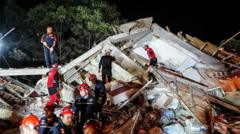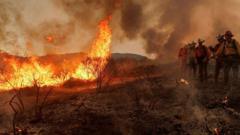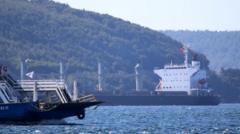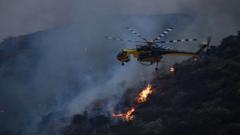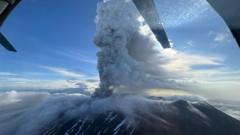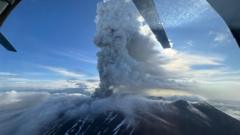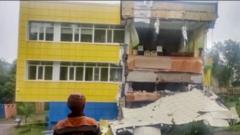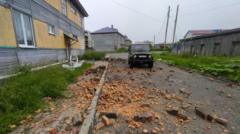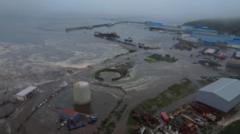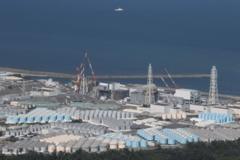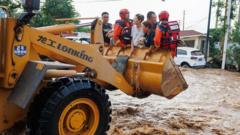Chilean and Argentine authorities respond to seismic activity by issuing tsunami alerts, leading thousands to seek safety in higher ground.
Tsunami Alerts Prompt Evacuations in Southern Chile and Argentina After Powerful Quake

Tsunami Alerts Prompt Evacuations in Southern Chile and Argentina After Powerful Quake
A 7.4 magnitude earthquake leads to mass evacuations along the coast.
Coastal regions of Chile and neighboring Argentina have implemented emergency evacuations after a significant 7.4 magnitude earthquake struck off the southern coast. The seismic event, which occurred in the Drake Passage between Cape Horn and Antarctica at 09:58 local time (12:58 GMT), prompted Chilean officials to activate tsunami warnings for the Magallanes region and the Chilean Antarctic Territory.
Reports from the US Geological Survey indicated that the quake's epicenter was located approximately 219 kilometers (136 miles) from Ushuaia, Argentina, the southernmost city in the world. With the earthquake recorded at a shallow depth of 10 kilometers (6 miles), authorities quickly mobilized precautionary measures, and the tsunami alert extended into Argentina's Tierra del Fuego province.
Within hours of the earthquake, thousands were seen making their way to safety. Over 1,700 individuals left the vulnerable coastal areas in Chile, with 1,000 evacuating from Puerto Williams and around 500 from Puerto Natales, as confirmed by the Chilean disaster management agency, Senapred. Additionally, approximately 32 staff members were relocated from the research bases in Antarctica.
Chilean President Gabriel Boric took to social media platform X to encourage individuals to evacuate coastal areas, stating, “We call for evacuation of the coastline throughout the Magallanes region.” In response to the crisis, Senapred elevated its disaster alert level, activating all available resources for emergency management.
Eye witness accounts and social media footage demonstrated the collaborative effort among residents, with scenes of people moving to higher ground while emergency sirens sounded. In a display of humanitarian response, footage emerged of police assisting a person in a wheelchair to safety in Puerto Williams, a town with a modest population of around 2,800 inhabitants.
For Argentina, the shaking was primarily felt in Ushuaia, although the impacts were reportedly less severe in adjacent towns. Local authorities informed the press that about 2,000 residents had been safely relocated away from coastal areas. Chile frequently experiences seismic activity due to the convergence of three tectonic plates within its geographic boundaries.
Reports from the US Geological Survey indicated that the quake's epicenter was located approximately 219 kilometers (136 miles) from Ushuaia, Argentina, the southernmost city in the world. With the earthquake recorded at a shallow depth of 10 kilometers (6 miles), authorities quickly mobilized precautionary measures, and the tsunami alert extended into Argentina's Tierra del Fuego province.
Within hours of the earthquake, thousands were seen making their way to safety. Over 1,700 individuals left the vulnerable coastal areas in Chile, with 1,000 evacuating from Puerto Williams and around 500 from Puerto Natales, as confirmed by the Chilean disaster management agency, Senapred. Additionally, approximately 32 staff members were relocated from the research bases in Antarctica.
Chilean President Gabriel Boric took to social media platform X to encourage individuals to evacuate coastal areas, stating, “We call for evacuation of the coastline throughout the Magallanes region.” In response to the crisis, Senapred elevated its disaster alert level, activating all available resources for emergency management.
Eye witness accounts and social media footage demonstrated the collaborative effort among residents, with scenes of people moving to higher ground while emergency sirens sounded. In a display of humanitarian response, footage emerged of police assisting a person in a wheelchair to safety in Puerto Williams, a town with a modest population of around 2,800 inhabitants.
For Argentina, the shaking was primarily felt in Ushuaia, although the impacts were reportedly less severe in adjacent towns. Local authorities informed the press that about 2,000 residents had been safely relocated away from coastal areas. Chile frequently experiences seismic activity due to the convergence of three tectonic plates within its geographic boundaries.

